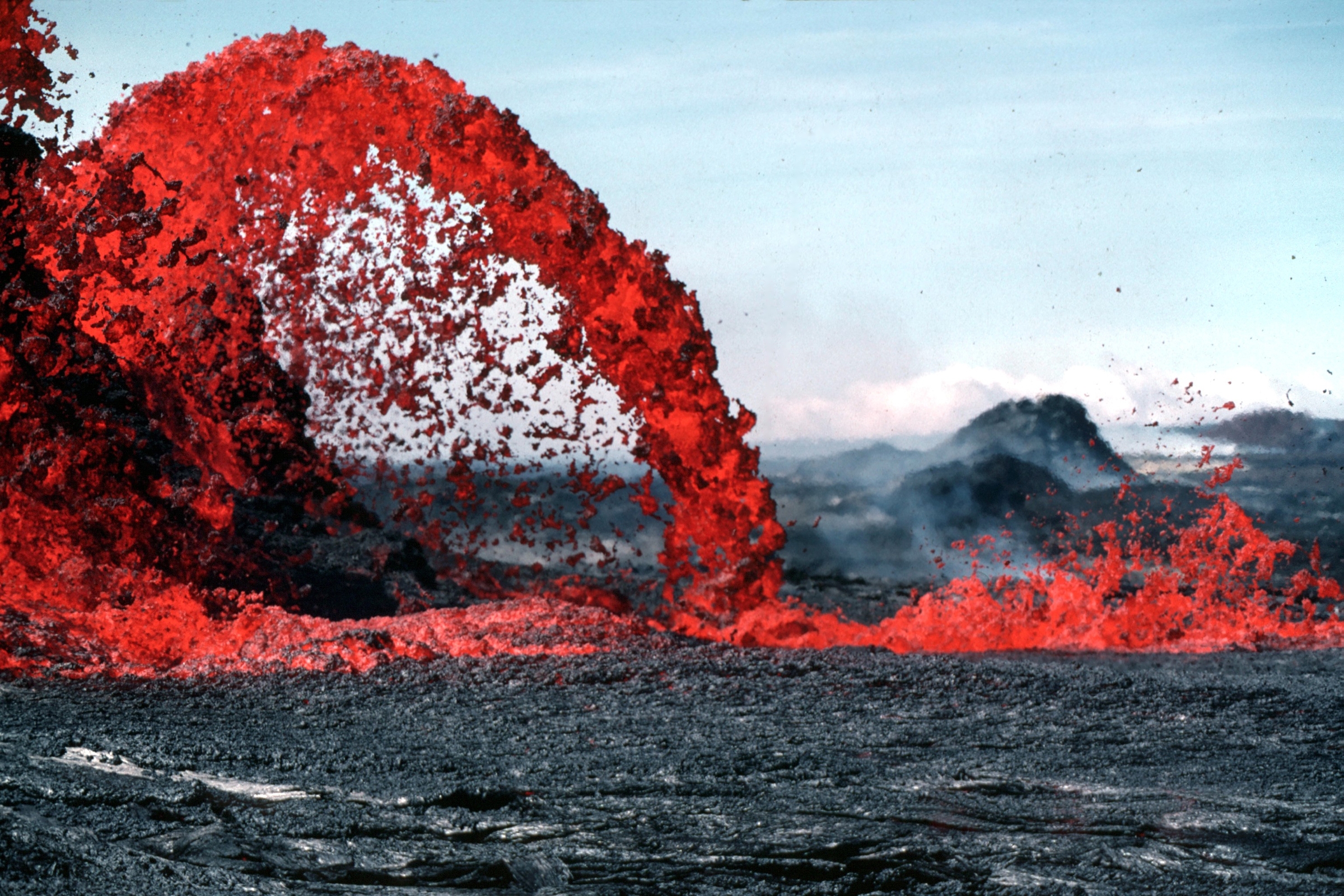|
Kunowsky (lunar Crater)
Kunowsky is a small lunar impact crater on the Mare Insularum, in the western half of the Moon's near side. It is named after the German astronomer Georg Karl Friedrich Kunowsky. It lies about one third the distance from Encke to the west-northwest and Lansberg to the east-southeast. This formation is surrounded by lunar mare, and the interior has been flooded by basaltic lava, leaving only a roughly circular rim projecting above the surface. The rim is slender and sharp-edged, with no significant erosion. Apart from a tiny craterlet at the midpoint of the interior floor, this crater has no other significant features. It does lie in a region of the mare where rays from the craters Kepler to the northwest and Copernicus farther to the northeast. Satellite craters By convention these features are identified on lunar maps by placing the letter on the side of the crater midpoint that is closest to Kunowsky. External links *Lunar Orbiter 1 The 1966 Lunar Orbiter 1 robotic ... [...More Info...] [...Related Items...] OR: [Wikipedia] [Google] [Baidu] |
Lunar Orbiter 4
Lunar Orbiter 4 was a robotic U.S. spacecraft, part of the Lunar Orbiter program, Lunar Orbiter Program, designed to orbit the Moon, after the three previous orbiters had completed the required needs for Project Apollo, Apollo mapping and site selection. It was given a more general objective, to "perform a broad systematic photographic survey of lunar surface features in order to increase the scientific knowledge of their nature, origin, and processes, and to serve as a basis for selecting sites for more detailed scientific study by subsequent orbital and landing missions". It was also equipped to collect selenodetic, radiation intensity, and micrometeoroid impact data. Mission Summary The spacecraft was placed in a Free-return trajectory, cislunar trajectory and injected into an elliptical near polar high lunar orbit for data acquisition. The orbit was with an inclination of 85.5 degrees and a period of 12 hours. After initial photography on May 11, 1967 problems started occu ... [...More Info...] [...Related Items...] OR: [Wikipedia] [Google] [Baidu] |
Basalt
Basalt (; ) is an aphanite, aphanitic (fine-grained) extrusive igneous rock formed from the rapid cooling of low-viscosity lava rich in magnesium and iron (mafic lava) exposed at or very near the planetary surface, surface of a terrestrial planet, rocky planet or natural satellite, moon. More than 90% of all volcanic rock on Earth is basalt. Rapid-cooling, fine-grained basalt is chemically equivalent to slow-cooling, coarse-grained gabbro. The eruption of basalt lava is observed by geologists at about 20 volcanoes per year. Basalt is also an important rock type on other planetary bodies in the Solar System. For example, the bulk of the plains of volcanism on Venus, Venus, which cover ~80% of the surface, are basaltic; the lunar mare, lunar maria are plains of flood-basaltic lava flows; and basalt is a common rock on the surface of Mars. Molten basalt lava has a low viscosity due to its relatively low silica content (between 45% and 52%), resulting in rapidly moving lava flo ... [...More Info...] [...Related Items...] OR: [Wikipedia] [Google] [Baidu] |
Sterling Publishing Co
Sterling Publishing Company, Inc. is a publisher of a broad range of subject areas, with multiple imprints and more than 5,000 titles in print. Founded in 1949 by David A. Boehm, Sterling also publishes books for a number of brands, including AARP, Hasbro, Hearst Magazines, and ''USA TODAY'', as well as serves as the North American distributor for domestic and international publishers including: Anova, the Brooklyn Botanic Garden, Carlton Books, Duncan Baird, Guild of Master Craftsmen, the Orion Publishing Group, and Sixth & Spring Books. Sterling also owns and operates two verticals, Lark Crafts and Pixiq. Sterling Publishing is a wholly owned subsidiary of Barnes & Noble, which acquired it in 2003. On January 5, 2012, ''The Wall Street Journal'' reported that Barnes & Noble had put its Sterling Publishing business up for sale. Negotiations failed to produce a buyer, however, and Sterling is reportedly no longer for sale as of March, 2012. In January 2022, Sterling rebranded ... [...More Info...] [...Related Items...] OR: [Wikipedia] [Google] [Baidu] |
Jonathan's Space Report
''Jonathan's Space Report'' (JSR) is a newsletter about the Space Age, hosted at Jonathan's Space Page. It is written by Jonathan McDowell, a Center for Astrophysics Harvard & Smithsonian astrophysicist. It is updated as McDowell's schedule permits, but he tries to publish two issues each month. Originally the website was hosted on a Harvard University account, but was moved in late 2003 to a dedicated domain. Started in 1989, the newsletter reports on recent space launches, International Space Station activities and space craft developments. McDowell's report occasionally corrects NASA's official web sites, or provides additional data on classified launches that aren't available elsewhere. Associated projects on the JSR web site are: * A catalog of all known geosynchronous satellites and their current positions * A listing of satellite launch attempts * A cross-reference between catalog number and international designation of artificial satellites McDowell has long campaigne ... [...More Info...] [...Related Items...] OR: [Wikipedia] [Google] [Baidu] |
Cambridge University Press
Cambridge University Press is the university press of the University of Cambridge. Granted letters patent by Henry VIII of England, King Henry VIII in 1534, it is the oldest university press A university press is an academic publishing house specializing in monographs and scholarly journals. Most are nonprofit organizations and an integral component of a large research university. They publish work that has been reviewed by schola ... in the world. It is also the King's Printer. Cambridge University Press is a department of the University of Cambridge and is both an academic and educational publisher. It became part of Cambridge University Press & Assessment, following a merger with Cambridge Assessment in 2021. With a global sales presence, publishing hubs, and offices in more than 40 Country, countries, it publishes over 50,000 titles by authors from over 100 countries. Its publishing includes more than 380 academic journals, monographs, reference works, school and uni ... [...More Info...] [...Related Items...] OR: [Wikipedia] [Google] [Baidu] |
NASA
The National Aeronautics and Space Administration (NASA ) is an independent agency of the US federal government responsible for the civil space program, aeronautics research, and space research. NASA was established in 1958, succeeding the National Advisory Committee for Aeronautics (NACA), to give the U.S. space development effort a distinctly civilian orientation, emphasizing peaceful applications in space science. NASA has since led most American space exploration, including Project Mercury, Project Gemini, the 1968-1972 Apollo Moon landing missions, the Skylab space station, and the Space Shuttle. NASA supports the International Space Station and oversees the development of the Orion spacecraft and the Space Launch System for the crewed lunar Artemis program, Commercial Crew spacecraft, and the planned Lunar Gateway space station. The agency is also responsible for the Launch Services Program, which provides oversight of launch operations and countdown management f ... [...More Info...] [...Related Items...] OR: [Wikipedia] [Google] [Baidu] |
Lunar Orbiter 1
The 1966 Lunar Orbiter 1 robotic spacecraft mission, part of NASA's Lunar Orbiter program, was the first American spacecraft to orbit the Moon. It was designed primarily to photograph smooth areas of the lunar surface for selection and verification of safe landing sites for the Surveyor and Apollo missions. It was also equipped to collect selenodetic, radiation intensity, and micrometeoroid impact data. Mission Summary Mission controllers injected the spacecraft into a parking orbit around Earth on August 10, 1966, at 19:31 UTC. The trans-lunar injection burn occurred at 20:04 UTC. The spacecraft experienced a temporary failure of the Canopus star tracker (probably due to stray sunlight) and overheating during its cruise to the Moon. The star tracker problem was resolved by navigating using the Moon as a reference, and the overheating was abated by orienting the spacecraft 36 degrees off-Sun to lower the temperature. Lunar Orbiter 1 was injected into an elliptical ... [...More Info...] [...Related Items...] OR: [Wikipedia] [Google] [Baidu] |
Copernicus (lunar Crater)
Copernicus is a lunar impact crater located in eastern Oceanus Procellarum. It was named after the astronomer Nicolaus Copernicus. It typifies craters that formed during the Copernican period in that it has a prominent ray system. It may have been created by debris from the breakup of the parent body of asteroid 495 Eulalia 800 million years ago. Characteristics Copernicus is visible using binoculars, and is located slightly northwest of the center of the Moon's Earth-facing hemisphere. South of the crater is the Mare Insularum, and to the south-south west is the crater Reinhold. North of Copernicus are the Montes Carpatus, which lie at the south edge of Mare Imbrium. West of Copernicus is a group of dispersed lunar hills. Due to its relative youth, the crater has remained in a relatively pristine shape since it formed. The circular rim has a discernible hexagonal form, with a terraced inner wall and a 30 km wide, sloping rampart that descends nearly a kilometer to the s ... [...More Info...] [...Related Items...] OR: [Wikipedia] [Google] [Baidu] |
Kepler (lunar Crater)
Kepler is a lunar impact crater that lies between the Oceanus Procellarum to the west and Mare Insularum in the east. To the southeast is the crater Encke. Kepler is named for the 17th century German astronomer and mathematician Johannes Kepler. Description Kepler is most notable for the prominent ray system that covers the surrounding mare. The rays extend for well over 300 kilometers, overlapping the rays from other craters. Kepler has a small rampart of ejecta surrounding the exterior of its high rim. The outer wall is not quite circular, and possesses a slightly polygonal form. The interior walls of Kepler are slumped and slightly terraced, descending to an uneven floor and a minor central rise. One of the rays from Tycho, when extended across the Oceanus Procellarum, intersects this crater. This was a factor in the choice of the crater's name when Giovanni Riccioli was creating his system of lunar nomenclature, as Kepler used the observations of Tycho Brahe while devis ... [...More Info...] [...Related Items...] OR: [Wikipedia] [Google] [Baidu] |
Ray System
A ray system comprises radial streaks of fine '' ejecta'' thrown out during the formation of an impact crater, looking somewhat like many thin spokes coming from the hub of a wheel. The rays may extend for lengths up to several times the diameter of their originating crater, and are often accompanied by small secondary craters formed by larger chunks of ejecta. Ray systems have been identified on the Moon, Earth ( Kamil Crater), Mercury, and some moons of the outer planets. Originally it was thought that they existed only on planets or moons lacking an atmosphere, but more recently they have been identified on Mars in infrared images taken from orbit by '' 2001 Mars Odyssey''s thermal imager. Rays appear at visible, and in some cases infrared wavelengths, when ejecta are made of material with different reflectivity (i.e., albedo) or thermal properties from the surface on which they are deposited. Typically, visible rays have a higher albedo than the surrounding surface. More rarel ... [...More Info...] [...Related Items...] OR: [Wikipedia] [Google] [Baidu] |
Lava
Lava is molten or partially molten rock (magma) that has been expelled from the interior of a terrestrial planet (such as Earth) or a moon onto its surface. Lava may be erupted at a volcano or through a fracture in the crust, on land or underwater, usually at temperatures from . The volcanic rock resulting from subsequent cooling is also often called ''lava''. A lava flow is an outpouring of lava during an effusive eruption. (An explosive eruption, by contrast, produces a mixture of volcanic ash and other fragments called tephra, not lava flows.) The viscosity of most lava is about that of ketchup, roughly 10,000 to 100,000 times that of water. Even so, lava can flow great distances before cooling causes it to solidify, because lava exposed to air quickly develops a solid crust that insulates the remaining liquid lava, helping to keep it hot and inviscid enough to continue flowing. The word ''lava'' comes from Italian and is probably derived from the Latin word ''labes ... [...More Info...] [...Related Items...] OR: [Wikipedia] [Google] [Baidu] |
Lunar Mare
The lunar maria (; singular: mare ) are large, dark, basaltic plains on Earth's Moon, formed by ancient asteroid impacts on the far side on the Moon that triggered volcanic activity on the opposite (near) side. They were dubbed , Latin for 'seas', by early astronomers who mistook them for actual seas. They are less reflective than the "highlands" as a result of their iron-rich composition, and hence appear dark to the naked eye. The maria cover about 16% of the lunar surface, mostly on the side visible from Earth. The few maria on the far side are much smaller, residing mostly in very large craters. The traditional nomenclature for the Moon also includes one (ocean), as well as features with the names ('lake'), ('marsh'), and ('bay'). The last three are smaller than maria, but have the same nature and characteristics. The names of maria refer to sea features (Mare Humorum, Mare Imbrium, Mare Insularum, Mare Nubium, Mare Spumans, Mare Undarum, Mare Vaporum, Oceanus Procellarum ... [...More Info...] [...Related Items...] OR: [Wikipedia] [Google] [Baidu] |








